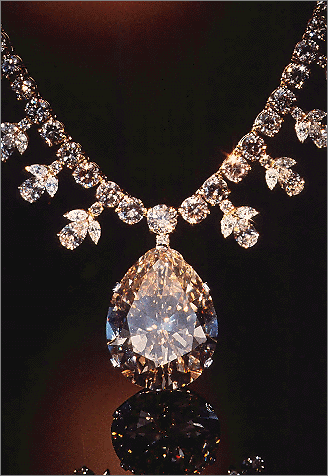 The world’s largest cut topaz, called the American Topaz, resides at the Smithsonian Institution in
The world’s largest cut topaz, called the American Topaz, resides at the Smithsonian Institution in
As stunning as this cut topaz is, another display at the Smithsonian is equally dazzling and awe-inspiring. That’s a sherry-colored topaz “spray” from the
Other spectacular displays of natural crystals include a cluster of Stibnite, an ore of antimony, which has a bright metallic luster. This spectacular group of crystals is from Iyo,
Another huge mineral in the exhibit is the Smithsonite, named for James Smithson, who bequeathed the funds to establish the Smithsonian Institution. He first discovered this greenish zinc carbonate mineral from the Kelly Mine in
Some of the other don’t miss items in the Smithsonian’s Gem Collection are the Smithsonian Canary Diamond, a huge canary and diamond ring. The 98.6-carat Bismarck Sapphire is also part of the collection and is one of the world’s largest sapphires. It originally came from




